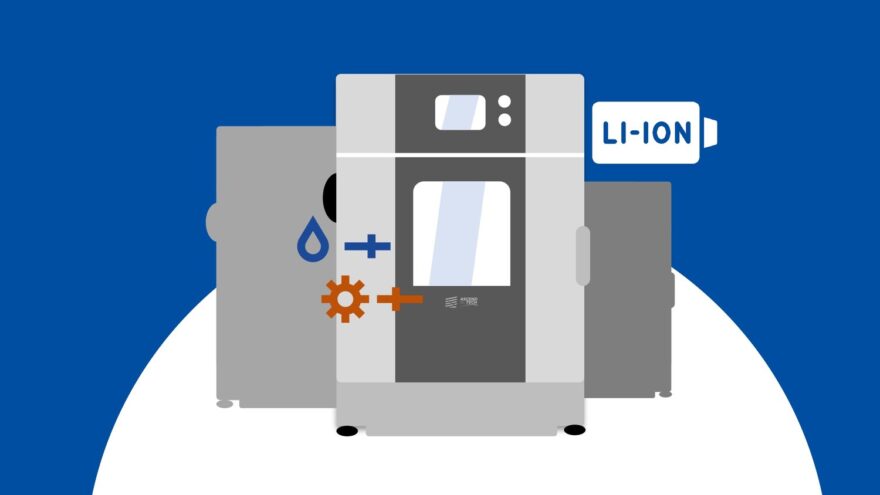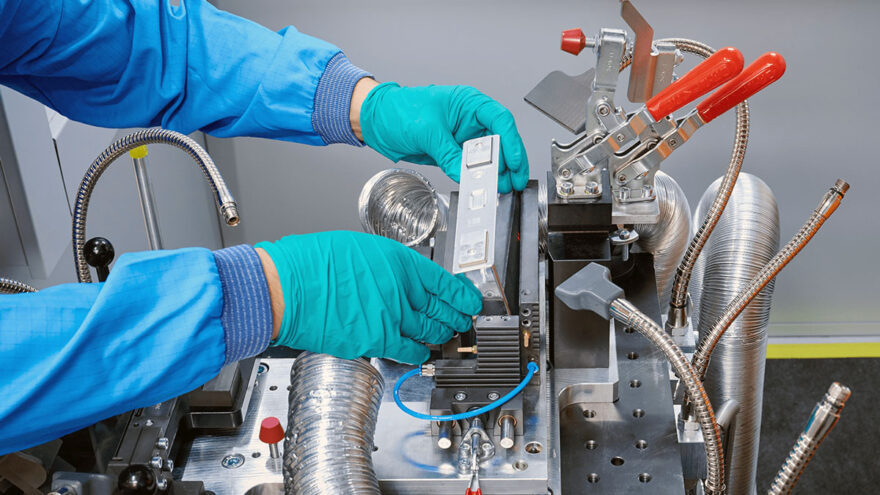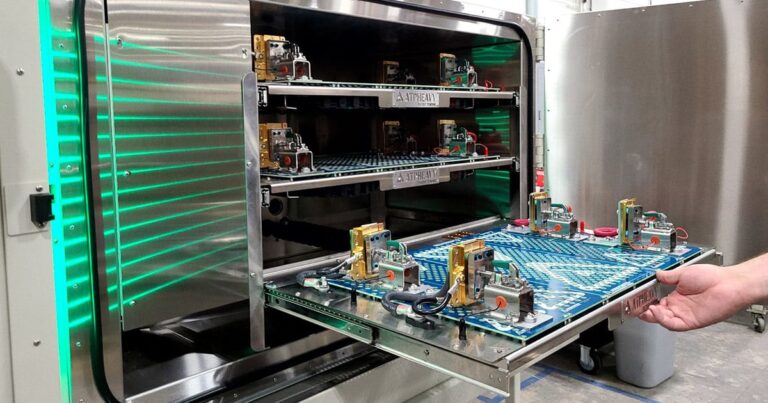Lithium batteries have become the lifeblood of our modern world, powering everything from our smartphones to electric vehicles. But their ubiquitous presence doesn’t come without risk. Ensuring the safety, reliability, and performance of lithium batteries is paramount. This is where lithium battery test chambers enter the picture. In this blog post, we will demystify these chambers, shedding light on what they are and how they work.
What Are Lithium Battery Test Chambers?

Lithium battery test chambers are controlled environments specifically designed for subjecting lithium batteries to a battery of tests. These tests range from evaluating their performance under extreme conditions to assessing their safety features. As experts from BellTestChamber told us, battery test chamber simulates a range of environmental conditions that batteries might encounter during their operational life.
Following are types:
- Environmental Chambers: These chambers can replicate temperature, humidity, and altitude conditions, allowing researchers to test batteries in extreme climates and ensure their functionality remains intact.
- Thermal Chambers: Used for thermal cycling and thermal abuse tests, these chambers mimic the temperature fluctuations batteries endure, resembling real-world scenarios.
- Safety Test Chambers: Primarily used to assess the safety of batteries, these chambers expose cells to overcharge, over-discharge, and short-circuit conditions to ensure they don’t pose risks.
Importance of Controlled Testing Environments
Lithium battery test chambers provide the controlled conditions necessary for accurate and reproducible testing. Just as a lab rat’s behavior in a maze might differ between a well-lit room and a dark one, battery performance can vary significantly when exposed to different environmental conditions. Therefore, controlling these variables is essential to achieve meaningful test results.
Components of Lithium Battery Test Chambers

Let’s analyze most important components.
Temperature Control Systems
Temperature control systems are the beating heart of these chambers. They allow researchers to vary the temperature, replicating extreme heat and cold conditions. This resembles the way a chef adjusts the heat on a stove to cook a perfect meal – precise control is key.
Humidity Control Systems
Humidity control systems ensure that the moisture content in the chamber remains constant. Like a potter shaping clay, maintaining humidity at a specific level is crucial for consistent and reliable results.
Gas Monitoring and Control
To recreate realistic conditions, gas monitoring and control systems help regulate the atmosphere inside the chamber. These systems are akin to maintaining the right mix of ingredients in a chemistry experiment. Precision is the key to the desired outcome.
Safety Features
Safety is paramount when dealing with volatile lithium batteries. Chambers are equipped with safety features, like emergency shut-off mechanisms and gas sensors, to prevent accidents. This is akin to having smoke detectors and fire extinguishers in your home for protection.
Data Acquisition and Logging Systems
Data is the lifeblood of testing. These systems monitor and record data throughout the testing process. It’s similar to a black box in an aircraft, ensuring every piece of information is recorded for analysis, making it easier to understand battery behavior.
The Testing Process
Testing is a meticulous process. Batteries are subjected to a series of tests that gauge their performance, safety, and reliability.
Thermal Testing
Thermal cycling involves repeatedly exposing batteries to extreme temperature variations. This is akin to repeatedly flexing a material to test its flexibility. Similarly, thermal abuse tests intentionally subject batteries to extreme conditions, pushing them to their limits to assess safety and performance.
Thermal testing mimics real-world scenarios where batteries face temperature fluctuations. It ensures that batteries can operate efficiently in diverse climates, from the icy cold of winter to the scorching heat of summer.
Environmental Testing
Environmental testing replicates conditions like humidity, altitude, and temperature to assess a battery’s response. It’s like simulating a hike to a mountain peak or a swim in the ocean to test an athlete’s endurance.
These tests are crucial for understanding how a battery performs under various conditions and for designing products that can withstand harsh environmental factors.
Safety Testing
Safety tests ensure that batteries don’t pose a threat when subjected to extreme conditions. Overcharge, over-discharge, and short-circuit tests are like stress tests for batteries, revealing their breaking points.
By conducting these tests, manufacturers can identify any vulnerabilities in the battery’s design and prevent safety issues from arising in real-world usage.
Why Lithium Battery Test Chambers Are Essential?

If you are new to this world, you might wonder why they are essential. We are here to tell.
Ensuring Product Safety and Reliability
Lithium battery test chambers play a pivotal role in ensuring that the batteries consumers rely on are safe and reliable. Just as an architect meticulously tests the structural integrity of a building, these chambers help manufacturers ensure their batteries won’t fail when needed the most.
Regulatory Compliance and Standards
Battery testing chambers are vital for meeting stringent industry standards and regulations. Compliance is akin to following traffic rules – it keeps everything running smoothly and safely.
Reducing the Risk of Battery Failures
Preventing battery failures is paramount. Just as a pilot goes through rigorous training to ensure safe flights, testing chambers help identify potential issues and mitigate risks.
Accelerating Research and Development
In the race for innovation, these chambers enable researchers to develop better batteries faster, driving technological advancements. Think of them as a turbocharger for the battery industry.
Advancements in Lithium Battery Testing

In the ever-evolving world of technology, battery testing is no exception. Advanced materials, improved data analysis techniques, and AI-driven systems are shaping the future of battery testing.
Automation and remote monitoring have revolutionized testing, making it more efficient and allowing for real-time data analysis. It’s like having a robot in the lab, tirelessly collecting and analyzing data.
Sustainability is not just a buzzword but an imperative. Battery testing is becoming more eco-friendly by minimizing waste and energy consumption. It’s akin to driving a fuel-efficient car to reduce your carbon footprint.
Conclusion
Lithium battery test chambers are the unsung heroes behind the batteries powering our modern world. They ensure safety, reliability, and performance. By demystifying their role and significance, we hope to shed light on the hidden world of battery testing and inspire further innovation in this critical field.
Related Posts:
- 20 Best Gaming Headset Under 50$ 2024 - for PC, PS4,…
- Top 10 Best Dog Nail Grinder 2024 - Best Care for Your Pet
- Top 10 Best Paint Sprayer For Cabinets 2024 -…
- Top 10 Best Power Inverter for Car 2024 - Keep Your…
- Top 10 Best Outdoor Basketball Shoes 2024 - Durable…
- 15 Best Shoes for Jumping Rope 2024 - Maintain a…







